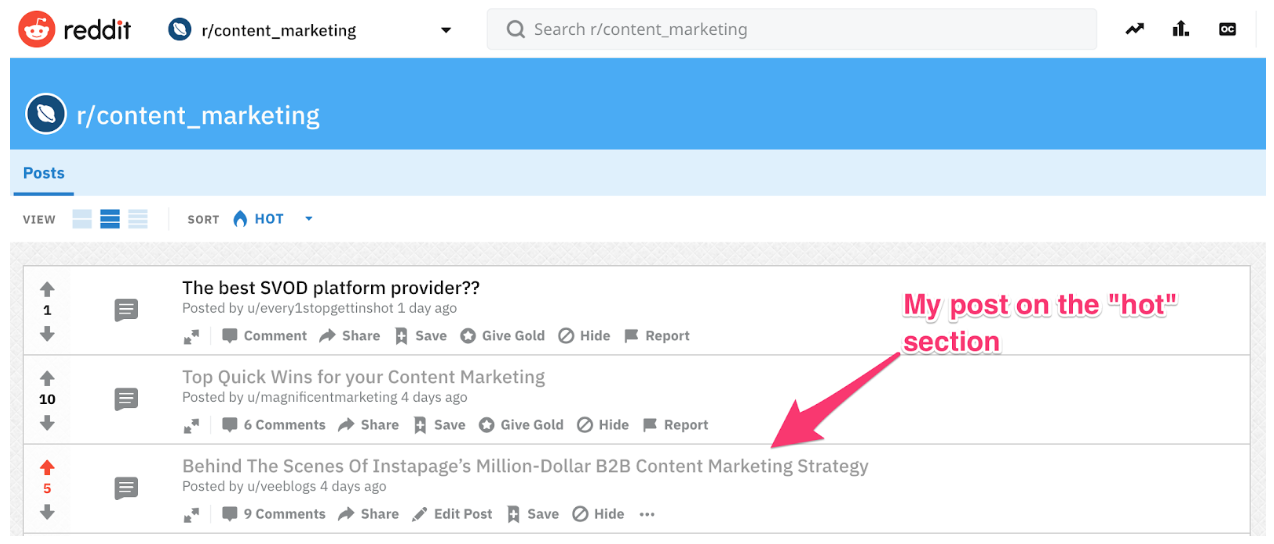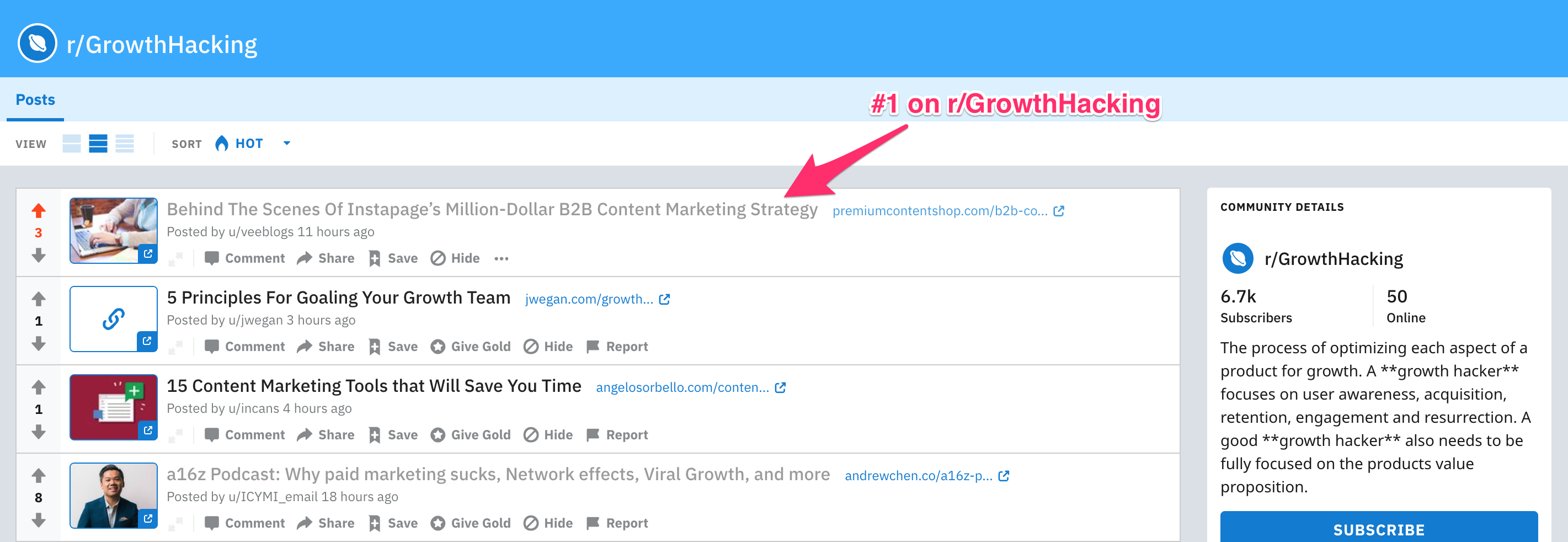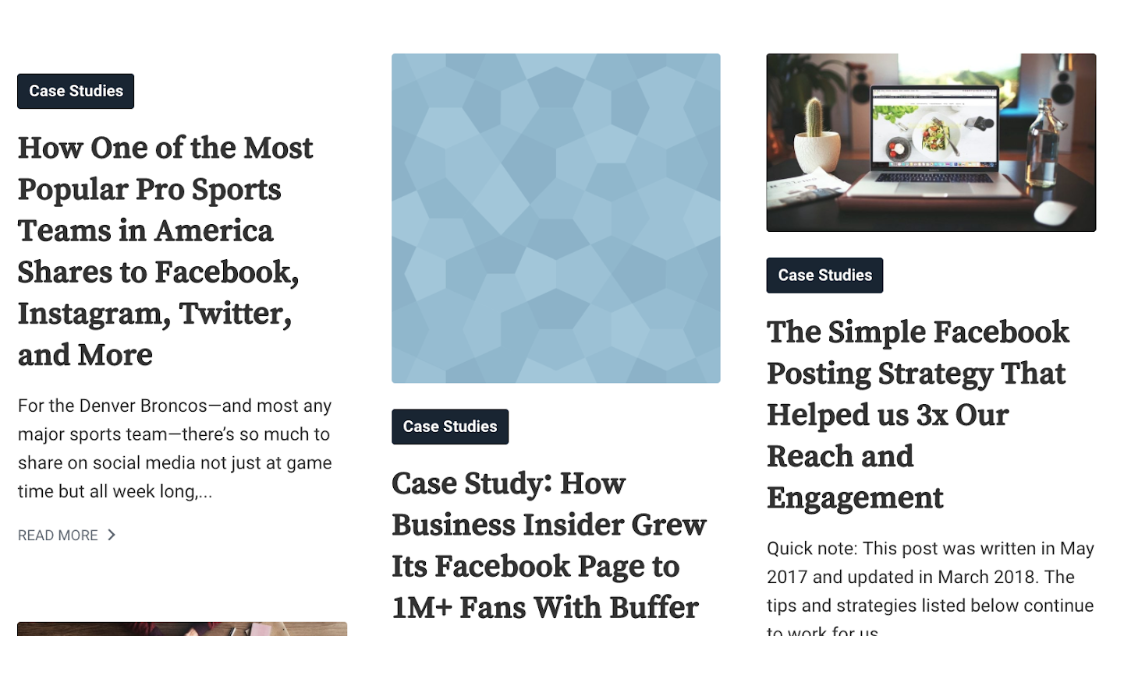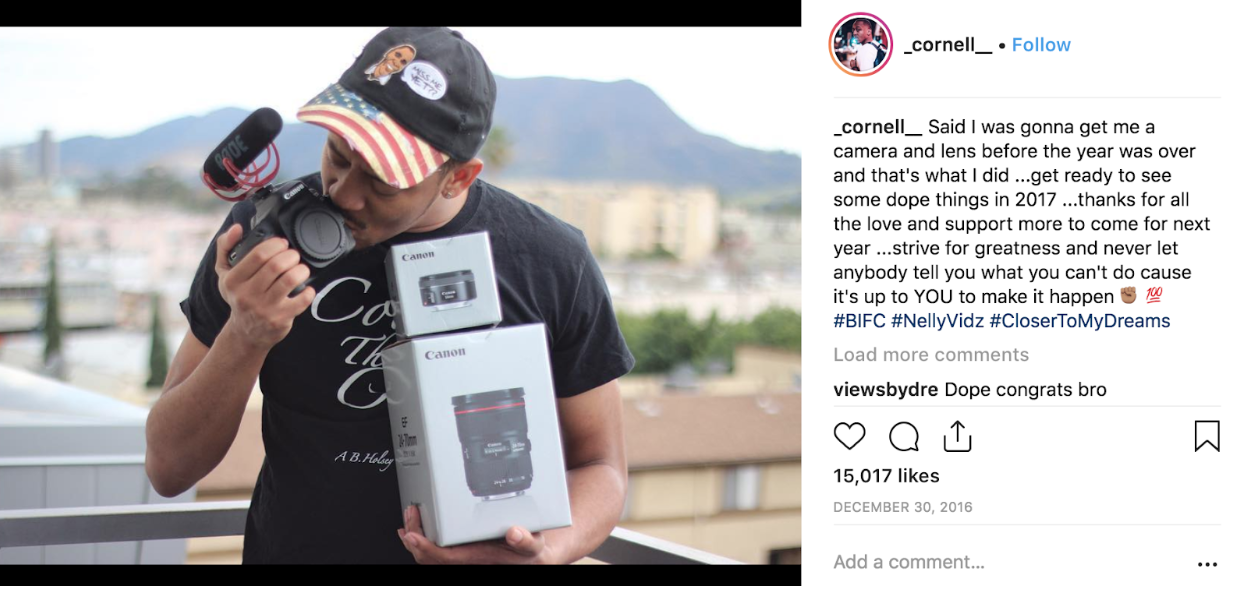When looking for content marketing advice, it’s best to have experienced marketers show you the way.
How about learning content strategies from someone who’s done it successfully for a big name brand?
I recently talked to Barry W. Enderwick, former director of customer acquisition and conversion at Netflix.
He shared a few critical tips on the direction your content marketing should take to be successful.
Here are the highlights and content marketing nuggets from my discussion with Enderwick.
1. First, Go Hard on Audience Data
A lot of activities go into content marketing.
From strategy development, content creation, content promotion to conversions, and actual bottom-line results, it can get really overwhelming what should come first when trying to optimize content marketing efforts.
What exactly should come first?
- Content creation?
- Promotion?
- Strategy?
- Conversions?
Your audience. That’s what comes first.
 Your audience.
Your audience.It may sound like a cliché, but considering the amount of content out there today that isn’t engaging customers — social media posts with few to no interactions, blog posts with tiny share numbers, millions of videos with almost no views — a lot still needs to be learned about “knowing your audience.”
And Enderwick shares the same perspective:
“It is critical that brands understand what role they play in their target customers’ lives for all types of marketing but especially for content marketing.
Startups with little resources can create a brand promise, brand attributes, and a brand story based on their understanding of their limited customer base.
More developed companies should conduct research not only with their current customers but also with their future customers (especially if they differ from one another).
These insights will inform the brand promise, which will inform the thematic approaches to content marketing. The brand attributes will act as the filter through which the content must pass through to be on-brand (everything from form fact and channel to copywriting).”
In essence, Enderwick says: go hard on data and create data-driven content.
Find the keywords your customers already use to search things related to your business:
An Example of Data-Driven Content
I wrote a post for another website, “Behind The Scenes Of Instapage’s Million-Dollar B2B Content Marketing Strategy”.
Before writing the post, I did a bit of research and nailed down the types of posts my audience wants to see. And as a freelance content marketer/writer, my target audiences are usually marketing managers, growth marketers, and content managers.
I looked at the type of posts that have been going viral lately in my industry (marketing).
From my research, I found that my target audience has lately been paying close attention to content marketing success stories; or content that reveals the behind-the-scenes of best-performing marketing campaigns.
So I created my post around that idea.
I went on different platforms to promote it — starting with Facebook groups, then Reddit.
On Reddit, the post performed better — getting to the “hot” section of r/content_marketing:

It also reached the “hot” section of r/GrowthHacking in just a few hours:

I don’t have all the answers as to why they liked it so much that they upvoted it and left comments that made the post go on the “hot” page.
What I do know is I researched what this audience wants to see and then created content based on that.
It’s the same for every piece of content that goes viral – popular content is usually data-driven.
Another good example of data-driven content marketing is Buffer.
How Buffer Uses Their Audience Data
Buffer’s primary target customers are social media marketers; marketers working for brands and execs that want to generate fast ROI.
As a marketer, you’re always looking for genuine, tried and true strategies to make social media work better for your employer or clients.
That’s data that Buffer has.
Buffer knows marketers want to see how social is working for other brands, which is why they’re creating content around that.

This way, Buffer makes good use of their audience data and draws the attention of their target customers (social media marketers).
So there needs to be more emphasis on data; not just data about who your customers are, but also where they go, people and things they watch, and so on.
2. The Future of Content Marketing as Technology Advances & Consumer Behavior Is Changing
“AI is getting more advanced by the day; you need to keep up.
Major changes are happening with social media algorithms, don’t get left behind with that, too.
Visuals are winning more attention than most other content types.”
There’s no almost no end to the speed of tech, and it’s shaping and changing our traditional views and behaviors.
Can content marketing keep up with all of these including the changes in customer behavior they bring? Here’s what Enderwick said:
“Hard to say. We’re going to see a shift to not only voice-driven UX but zero screen UX.
With that, there will be new challenges for marketers. I think consumers have come to expect content from brands but I also think they are getting savvier. So, content has to be increasingly genuine and not salesy.”
3. Content Is Still King as Tech Improves & Must Be High Quality & Genuine to Drive Results
It has become incredibly hard to attract an audience with content.
If buyers are going to pay even a few seconds to your content, their experience has to be better than the last time they spent a precious minute online.
Cornell Ross, for instance, creates amazingly funny videos on Instagram and he’s got over 1 million engaged followers doing that.
But he’s always had to step up his game from time to time.
For instance, he once put up a video of him purchasing new video equipment.

Moral of this story: If getting your content team on track, hiring a consultant, or buying a new camera as Ross did is what it takes for your content marketing to keep up with technology and attract your target audience, then commit and go for it.
4. Promote Your Content with a Focus on Traffic & Conversions
Almost every marketer now has a first-hand experience with content that doesn’t perform well.
You know, when you hit “publish” and all you get in return for your hard labor is crickets.
You need to find out how to promote content to bring in relevant traffic and conversions.
Enderwick put it this way:
“Similar to how product and target market determine channel selection, brands also determine what kind of content to create and how to get it in front of the people who will value it the most. What would work great for Red Bull would be terrible for Dove.”
So what types of content would work best for a brand like Netflix?
He said:
“Content itself!
People don’t sign up for Netflix just because it’s streaming per se, they sign up for the stories, actors, directors, etc.
So Netflix could, for example, provide the first episode of a new series via IGTV or as Stories on Instagram. They could also do behind-the-scenes live streams or even bring back the old DVD feature of ‘extras’ and use them in various channels.”
In other words, this points back to what I mentioned earlier about audience data.
The more data you have about your audience, the better you are at creating the content they really want to see.
For Netflix, their product is the content their customers want to see.
So they put that into ads, Instagram stories, tweets, Facebook posts, and so on.
“If you have a product that creates content for itself like Netflix, then that’s the type of content that would promote your product. If not, then you need to create content for your brand that sells your product,” Enderwick said.
Wall Street Journal, for instance, gives users a peek into their articles and then asks them to pay to read the full article.

This way, WSJ is creating content that both promotes itself and sells their product.
If your content works the same way, great. If it doesn’t, then you need to create data-driven content that promotes your own business/product.
What content promotion tactics would work great for Salesforce? Enderwick said he has had zero interaction with Salesforce, but offered this advice:
“Anything that helps the prospect be better at what they do but also supports the idea of using Salesforce in whatever product they are buying.
So, let’s say it’s CRM for small businesses; maybe they can do a small business workshop tour around the country that addresses all the problems small businesses face, not just CRM. In doing that, they would be providing outsized value and making their offering more attractive.”
5. One Important Bit About Content
Finally, I asked Enderwick to share his most important tip about content marketing.
He said:
“The big thing to avoid in content marketing is creating from a position of saying what you want to say.
For it to resonate it has to be rooted in what people are interested in and that resonates with them. Yes, it should be guided by the brand and marketing needs but just don’t create from that perspective.”
There You Have It – Strategies for Content Marketing Success
From tips on highly data-driven content, what types of content to create, to content promotion strategies, these are some content marketing success secrets, straight from the mouth of Barry W. Enderwick — the expert in charge of building Netflix’s audience from 2001 to 2010.
More Resources:
Image Credits
In-Post Image #1: Pexels
All screenshots taken by author, November 2018
Subscribe to SEJ
Get our daily newsletter from SEJ’s Founder Loren Baker about the latest news in the industry!
